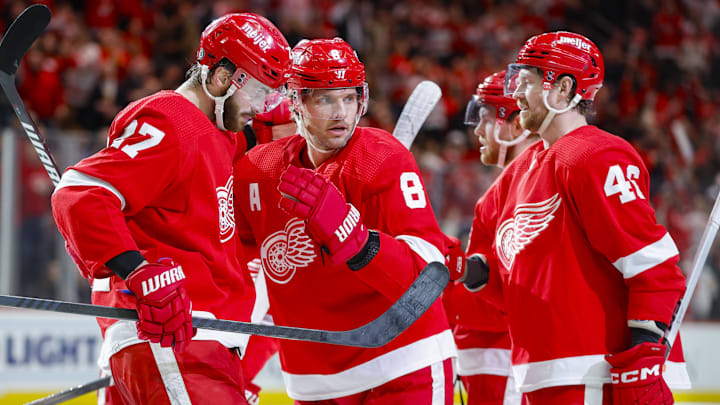The Detroit Red Wings need steady, above-average goaltending for the remainder of the season.
I fell short of saying elite goaltending simply because the Detroit Red Wings don't have an elite NHL-ready netminder on their roster.
Hockey can be such an odd sport sometimes. Veteran goaltender Alex Lyon was signed this past summer to be an insurance policy. You know, insurance is something we have but don't want to use, but if we need it, we're usually grateful to have bought it. Well, in Detroit's case, that's exactly the situation.
Lyon, 31, had been brought in on a two-year contract that averages just $900,000 per season. He was destined to be assigned to the Grand Rapids Griffins, where he could mentor top prospect Sebastian Cossa and be a reliable option if injuries in Detroit were to occur. Well, Lyon never made it to Grand Rapids, and right before the start of the regular season, Yzerman called up veteran journeyman Michael Hutchinson to fill that void. Hutchinson was eager to leave his couch and split time in the AHL as the Red Wings elected to carry three goalies on their active roster. He's even been pressed into duty for Detroit as injuries continued to mount.
With plenty of questions in goal throughout the first half of the season, Detroit has needed Lyon of late to take the reins in goal like he did last season while with the Florida Panthers. Before Thursday's game in L.A. the Detroit Red Wings had allowed a whopping 131 goals on the season, which ranks 27th in the league. Part of this is noted in my previous slide: some ineffective and insufficient defensive play from the five skaters. Lyon (before Thursday) is 6-4-0 with a reliable .917 save percentage and 2.53 GAA. Goaltending at the NHL level is one area I'd like to see Yzerman improve, especially if the Detroit Red Wings find themselves in a playoff position ahead of the deadline. John Gibson is my first choice, but he's been linked to the New Jersey Devils quite often of late. But I refuse to discount Ducks GM Pat Verbeek and Yzerman's relationship. If there is a trade to be made, these two should be able to hammer out a deal that works for both clubs.
Before suffering a lower-body injury, Ville Husso seemed as if he was finally breaking out of a lengthy slump that dates back to last season. Despite posting a 9-5-2 record, Husso maintained a save percentage of just .893 and a goals-against average of 3.53. Those are not efficient enough stats to be a No. 1 netminder in the NHL, or at least on a team with playoff aspirations.
James Reimer, 35, was brought in as a stable No. 2 goaltender and started fine, but his play has fallen way off. He's posted a 3-6-2 record with an awful .889 save percentage and 3.41 GAA, or not good. Reimer is forced to be the primary backup for the time being while Husso continues to recover from his injury, but as soon as he returns, Reimer will find himself up in the press box. As I mentioned earlier this week, the Detroit Red Wings need to roll with Lyon in goal for the time being and play him as the No. 1 goaltender under proven otherwise, and that appears to be what Lalonde is doing. Lyon made his fourth straight start on Thursday night. If Detroit takes the first two of three on this west coast road trip, Lalonde may turn to Reimer on Sunday in Anaheim to give Lyon a rare night off.
